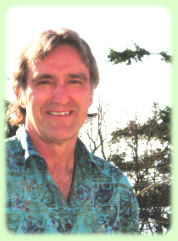 About Mark
About Mark
Mark is a certified Reflexologist and member since 1989 with the Reflexology Association of Canada.
He is also a member of the Reflexology Association of British Colombia.
He has specific training in the Ingham Method of Reflexology.
He has completed the courses with the Canadian Academy of Reflexology and Deep Muscle Therapy in Reflexologist Level Certification in Reflexology.
Mark has successfully completed over 100 hours in a Course and Workshop in Vibrational Healing in 1998 and 2005 with Ronald Polack, a graduate of the Canadian Chiropractic College and author of Vibrational Vitality. The studies included Anatomy, Physiology, Human Energy Fields, Chakras, Healing techniques, Client Comfort, and Practitioners Integrity.
Mark has also studied and been trained in other forms of natural healing:
- Postural Integration under the tutelage of Marie-Louise Simich, a Master Practitioner and Trainer of Postural Integration (two years of supervised instruction approximately 500 hours)
- Touch for Health Level 1 & 2
- Professional training with Terry Burnell, RDMT, ACAR in the Alzner School of Reflexology and Deep Muscle Therapy
- Crystal Therapy
He was instrumental in the development of an intentional spiritual community called Whispering Song in the mid 1990s in Ontario, Canada. He also was involved for a number of years with the Emissaries of Divine Light and studied the process of healing they have developed known as Attunement.
On a personal level, Mark has faced a number of serious medical conditions including cervical surgery, Hepatitis C, coronary heart disease, quadruple bypass and stents. Mark has also gone through many life changes. He has worked quite successfully with each of these situations using a combination of modern medical techniques and his use and knowledge of Vibrational Healing, Reflexology, and other natural healing arts.
His most recent challenge has been overcoming a family genetics pattern and lifestyle that has resulted in coronary heart desease from which he has already had a quadruple bypass and stents. Instrumental to his reversing this disease has been working with the Dean Ornish Reversal Program for Heart Disease.
The Dr. Dean Ornish program for reversing heart disease is comprised of 4 components (all of which need to be followed to ensure success in reversing heart disease). It involves committing to a comprehensive lifestyle change that would include:
- Regular aerobic exercise
- A daily stress management practice
- A very low fat/whole foods/plant-based diet
- Social support
By my standards, it was a world record
By Hannah Sutherland - Peace Arch News - May 17, 2008
Six hours of running and the finish line was finally coming into view.
Mark Trevis focused on his form – where he was holding his head, the way his feet connected with the pavement and how he held his arms – to make it through that last stretch. His final goal had been to run a marathon, and he was almost there.
He touched the sarong tied around his waist, whispered to the sky and pushed forward.
Dozens of his friends lined the last 100 metres, cheering him on.
But the two who caught his eye first as he took his last step towards the end were his daughters, who travelled to the Lower Mainland to support their father in his endeavor.
The last time Trevis had been with them was more than a year ago, when the 55-year-old was about to undergo bypass surgery.
AFTER SUFFERING a heart attack in 2006, Trevis learned he had 10 blockages in his heart: five vessels were 70 per cent blocked, two were completely clogged.
After an emotionally and physically draining surgery, Trevis decided to change his life. He became a vegan, and began meditating and practicing yoga and energy healing. He also made four goals – do the Vanouver Sun Run, climb the grueling Grouse Grind, and run a half-marathon and a marathon.
After completing the first two without a hitch, Trevis trained with South Surrey’s Running Room for the half-marathon. During that time, he suffered his second heart attack.
Despite a blockage in his heart and the fact one of his bypasses was kinked, Trevis got his cardiologist’s OK to continue.
He completed the race last October, and began preparing for the May 4 Vancouver Marathon.
But his trials weren’t yet over.
Trevis’ sister, Brenda McIntyre, died of heart complications in January. She was just five years older than Trevis.
Following the funeral, her daughters gave Trevis the sarong she used to wear. That small item of hers would prove to bring significant inspiration to him during the marathon.
Trevis followed a training program that included running about four days a week and a regimen of hill repeats, speed work and slow, long-distance running. The morning of the marathon, he felt ready.
And he was – Trevis paced the 26 miles between him and his last goal in six hours, five minutes and 10 seconds.
“It was absolutely incredible, absolutely amazing,” he said. “Painful, but that doesn’t matter – who cares.”
Trevis said by concentrating on his form, he was able to get through the tough patches.
“It really served me well.
“At one point my right leg went more or less numb and I couldn’t feel my foot hit the ground,” he said. “(But you) don’t let the tiredness of your body determine how you’re going to run.”
Trevis also fed off the energy around him, which he says was his sister.
“She was there – I felt her,” he said. “She was with me for the whole training and everything.”
Although Trevis was the 3,007th person to cross the finish line, he was happy with his time.
He ran both halves of the marathon faster than he did the October half-marathon.
“By my standards, it was a world record,” he said.
And it isn’t the end for Trevis by any means.
He hopes to start a program for runners with heart problems, and is toying with the idea of running an ultra-marathon – at least 50 miles.
“I have the type of personality to do that kind of a run,” he said. “I really enjoy the long, slow-distance stuff. I’m definitely suited to that kind of thing.”
Trevis hopes his accomplishments will inspire others to chase their dreams. “I’ve never felt as good as this in my whole life,” he said. “I’m walking testament to the fact that you... can do anything you want in the world.
“I haven’t done anything that anyone else can’t do.”
Keeping his eye on the finish line
By Hannah Sutherland - Peace Arch News - January 05, 2008
Mark Trevis is pumped to pace his first marathon
IT WAS the first holiday Mark Trevis remembers spending with his father.
Leonard was in the floral business and was often away from home, spending most of his time working.
Mark's parents had bought a little white cottage atop a hill not far from Ottawa. Once renovated, it was to be their dream home - the one they'd live in once their children left the nest.
Mark, then 17, was helping his father with renovations, when Leonard started having chest pains.
"I think we better go to the hospital," he told Mark, when the pains persisted.
"I'll get Mom."
"No, we don't have time for that."
Being a war veteran, Leonard wanted to be treated in a veterans facility.
While Mark held his father in the passenger seat and his brother-in-law drove, Leonard insisted they pass two non-veterans hospitals. If anything went awry, he wanted to ensure his wife would be left with the appropriate insurance.
When they finally reached a veterans hospital, Mark's brother-in-law parked and jumped out of the car to open the passenger side for Mark and his 47-year-old father.
"Thank God you made it," Leonard said, before collapsing and dying in Mark's arms.
MARK NOW works as purchaser and sales manager for a floral company. He has two adult daughters and lives with his wife, Erika, in a home near White Rock beach.
Pictures of John Lennon are tacked beside his computer, which quietly relays the soft twang of a guitar. His balcony overlooks the waves of the ocean calmly rolling over the beach, permeating the not-a-care-in-the-world, easy-going lifestyle that Mark once indulged in.
He loved to party, often going out and drinking with friends. He smoked up to two packs of cigarettes a day.
Although he had a history of heart disease in his family, Mark hadn't been one to keep fit. He may have lifted a couple of weights here and there, but he didn't exercise regularly.
It wasn't in his nature to take things too seriously.
The attitude came with a price. Mark was diagnosed with diabetes in 2006.
He thought about making some changes, but quickly learned it was too late.
IT WAS late morning on a summer day - two months after being diagnosed with diabetes - and Mark left work early, feeling sick to his stomach.
He thought his blood sugar might be low, so he checked. It was fine.
His heart was hurting though, and thinking it was heartburn, he lay down. As soon as he did, an immense pressure hit him, like an elephant stepping into his body and crushing his insides.
When he sat up, the pain eased, and when he got to his feet, he felt even better.
Mark refused to acknowledge he was experiencing anything serious - in the back of his mind he knew.
His dad had felt the same thing 37 years earlier. Mark was aware what the next step would be, but was scared to face it. He wasn't ready for that. Not yet.
Twelve hours later, Mark gave in to the pain and went to the hospital.
An angiogram showed he had 10 blockages in his heart. Five vessels were 70 per cent blocked and two were blocked completely.
The doctors recommended bypass surgery. Mark was terrified.
MARK STAYED in Peace Arch Hospital for three weeks before he could be transferred to Royal Columbian for the six-hour surgery.
During this time, he slipped into depression and fear. He wanted to change, but didn't know how. He wanted to turn his life around, but wondered if he could.
Mark spent time praying in the hospital chapel and meditating. Not being a religious person, Mark didn't know who he was praying to, but nevertheless, he asked for guidance.
While the doctors prepared him physically, Mark tried to get ready mentally and emotionally, but memories of a 17-year-old boy watching his dad die kept coming back.
The surgery was scheduled for July 21 - the anniversary of his father's death. He knew it wasn't just a coincidence, and tried to turn the date into a positive. He would claim that day back again, for his family, and for himself.
But it was a challenge to overcome his fear of death, and he didn't hide it, especially while riding in the ambulance towards Royal Columbian with his family.
When it was time to say goodbye and go into surgery, he looked up at his wife. She was trying not to cry. One daughter, a jokester like himself, tried to make him laugh. It was her way of dealing with it. His other daughter just held on.
Mark became quiet. There was nothing left to say.
Drift in...
Mark doesn't know where he is.
He feels something in his throat. He doesn't want it there, he wants to breathe on his own.
Why isn't anyone taking it out?
A nurse comes over and removes the tube.
That feels better.
Drift in...
The room is empty. Then, three familiar faces come in through the hallway.
Everything is a little more clear now, and he is moved by the look on their faces.
How could he be so selfish? They are just thankful that their father and husband is OK.
He is alive.
...Drift out.
BYPASS SURGERY reroutes blood around clogged arteries to improve blood flow.
A mammory artery and a vein from Mark's leg were used to create new paths for the blood to flow from his heart.
The healing process was painful for Mark and left a deep impact physically, emotionally and mentally.
He felt afraid to do anything, worried he'd put the vital organ in jeopardy once again. But the image of those thankful faces looking down on him was imprinted in his mind, motivating him to continue.
He returned to work a few months later, and made four goals for himself.
He was going to do Vancouver's Sun Run the following year, complete the Grouse Grind, run a half-marathon and run a marathon.
He started training last January.
MARK JOINED the Sun Run training program with Erika, who trained at his side.
He felt scared of something going wrong, but ran at his own pace, doing one day at a time.
Come April, he was ready to race.
He didn't care where he placed - this wasn't about winning.
Mark ran with the support of Erika, and recalls feeling overwhelmed with emotion when he crossed the finish line.
Nine months after bypass surgery, he had completed his first goal.
A month later, he found himself at the top of the Grouse Grind. Two to go, he thought.
Not only was Mark exercising, but he became a vegan as well. He began meditating and practising yoga and energy healing, trying every natural path possible to a swift recovery. He knew he could take medication for the rest of his life - that was easy. But he didn't want to rely on drugs for health. He was going to do it himself this time.
By the time he started training for the half-marathon, he was off all of his medication.
He trained with a group of runners from South Surrey's Running Room, who were going to a half-marathon in the Okanagan.
For 11 weeks, he ran four days a week practising tempo running, long and slow distance running and speed running.
Every Wednesday night for about five weeks, the runners also did hill running.
On the last night, on the last hill, with the fastest time he had ever made, Mark felt a pain in his heart.
THE DOCTOR initially thought Mark had pulled a muscle, but after running tests, came back with different news.
"Mr. Trevis, I'm sorry," he said. "You're having another heart attack."
Mark had a blockage and one of the bypasses in his heart was kinked. His cardiologist was away, and the cardiologist team at the hospital was hesitant to make decisions without him. To open up the blocked artery, they used a stent, which was inserted through the femoral artery in Mark's leg.
Mark wasn't in immediate danger from the remaining kink, but was advised to relax until his cardiologist returned.
It was Sept. 23 and the half-marathon was Oct. 7.
Five days before the half-marathon, Mark's cardiologist took a look at the tests.
To fix the kink would require another surgery, but it wasn't a necessary operation.
As long as he could run, Mark thought, he didn't want another surgery.
The doctor thought running would be OK - not realizing Mark meant a half-marathon, in just a few days.
But Mark couldn't stop now, not after training so hard for so long.
Prior to leaving for Kelowna, Mark's running group gave him a medal, calling him the most inspiring person in the group.
DURING THE 21.1 kilometre-trek, Mark alternated between running and walking, which seemed to work well.
It was at the 17-kilometre mark that he started to doubt himself.
Mark's leg began to ache - the same one the stent had been inserted through four weeks earlier.
He looked down and noticed his foot wasn't hitting the ground properly. It was twisting to the left, towards his body.
He focused on bringing his foot straight down while running. This concentration took his mind off the pain and brought him to 19 kilometres.
At this point, Mark knew he could make it. In his mind, he had already won.
Tears began trickling down his face, and he felt a great sense of appreciation for life - for being able to run.
The tears were still streaming when Mark crossed the finish line. All of his supporters were there - Erika and the runners he had trained so hard with.
If there was pain in his body, he didn't feel it.
He could only feel exhilaration - and the beating of his heart.
MARK TREVIS faces his fourth and final goal May 4 - the Vancouver International Marathon.






